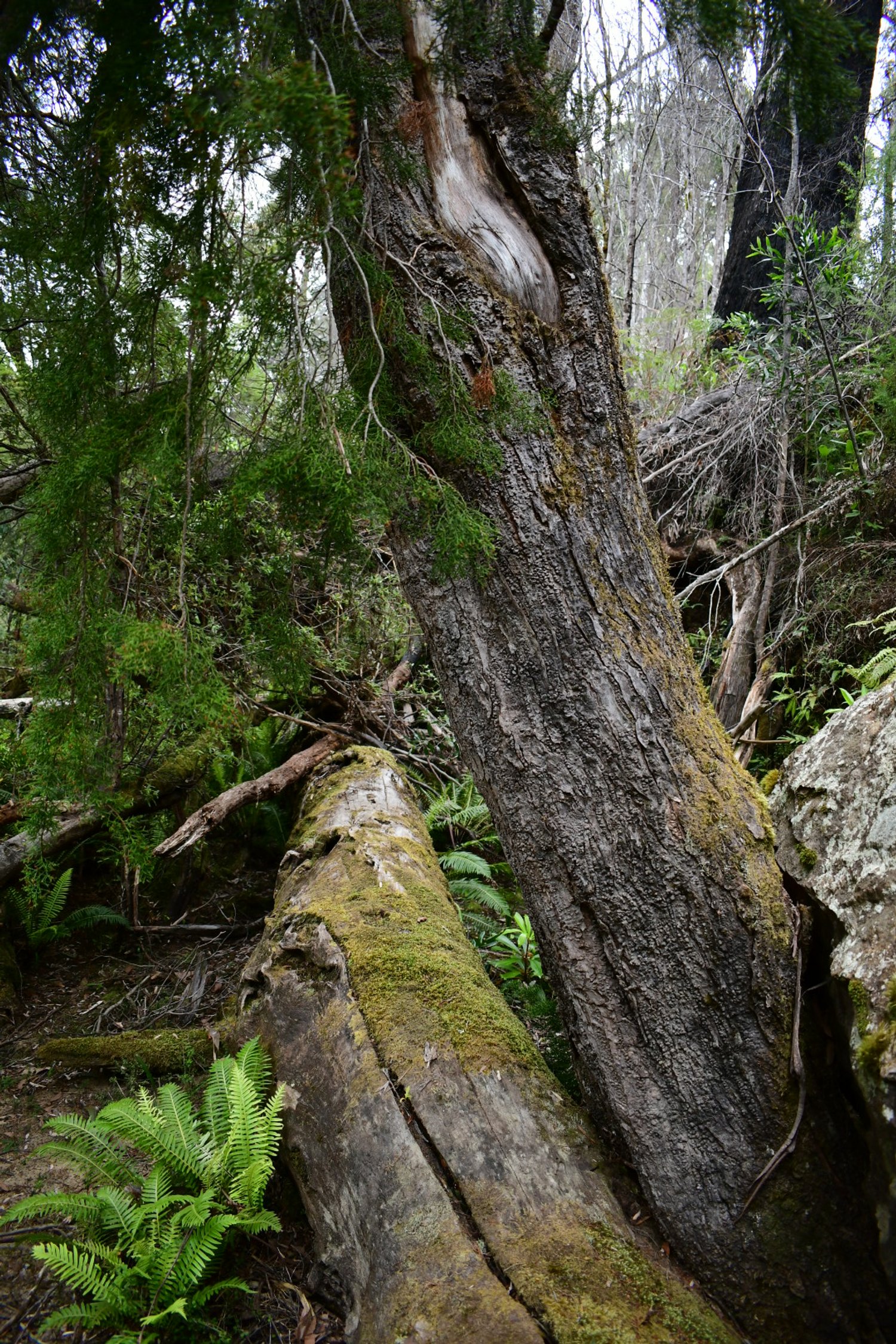Huon “pines” & temperate rainforests of gondwana
Lagarostrobos franklinii is an extremely long-lived member of the “ancient” conifer family Podocarpaceae, a family with a primarily Southern Hemisphere and tropical distribution. Members of this family can be tiny subshrubs or massive, gargantuan lumber trees. Many species have “cones” (aka “naked seeds” aka “megastrobili” (megastrobilus, singular) that are frequently bird-dispersed, thought that doesn’t seem to be the case in this species. Modern phylogenies seem to place the evolution of Podocarpaceae at the Triassic-Jurassic Boundary. It is a very “old” plant family.
I had been wanting to see this species - Lagarostrobos franklinii - for years, and finally got the chance to observe it in habitat, in the seemingly perpetually-wet, chilly temperate rainforests of Western Tasmania, where it frequently grows along creeks or streams or in very wet soils. It is almost always covered in epiphytic ferns and mosses as the habitat is just that wet. It was logged extensively between 1800 to the 1980s, and most old growth save for the most inaccessible and remote is now gone. However there are a few populations that remain, including one we visited which is partially pictured here, which was only discovered in the 1970s or 80s. I filmed this population the day we were here taking photos (video out on the Crime Pays Patreon now), and some of these trees are easily 1500 to 2,000 years old. Reportedly there is a a very large clone that has been cloning itself for a consistent 10,000 years, as this species grows extremely slowly and easily roots its branches as well as sends up new shoots intermittently. The wood was highly prized for ship-building as it is so resistant to rot, and one can see how being so rot-resistant would be an evolutionary advantage in such a wet habitat. The photos of growth rings and the photo of the slice (with my friend Matt looking intentionally ridiculous in it, as he did with a massive Copiapoa when I asked him to step next to it for scale) were taken at a local museum in Geeveston. You can see from the photo that Lagarostrobos add a new centimer in trunk diameter roughly every 30 years, it is one of the most slow-growing conifers I’ve encountered.
The ground everywhere at this site was mounded from the remnants of old logs of this tree had fallen over centuries ago and simply not rotted. A small creek ran through the population, which had - like the trees themselves - probably been there for millenia. The terrestrial leeches (harmless) abound at this site, as did a few massive specimens of Eucalyptus obliqua, which occupy the sites that aren’t as wet. To be here at this stand of trees felt like stepping back in time into the Miocene temperate rainforests of Antarctica. Atherosperma moschatum (Laurales) grew sympatric, as did Nothofagus cunninghamii, Drymophila cyanocarpa (Alstroemeriaceae), Telopea truncata (Proteaceae), Gahnia grandis (Cyperaceae), Notelaea ligustrina (Oleaceae), Anopterus glandulosus (Escalloniaceae), Tasmannia lanceolata (Winteraceae) and countless species of mosses and ferns. This stand of trees had NEVER been logged, which is unfortunately a rarity.
What amazed me most was how small the seeds and megastrobili were, the “cones” themselves resembling little zig-zag branching structures less than an inch long. I presume that Lagarostrobos, like most Podocarps, is dioecious.























